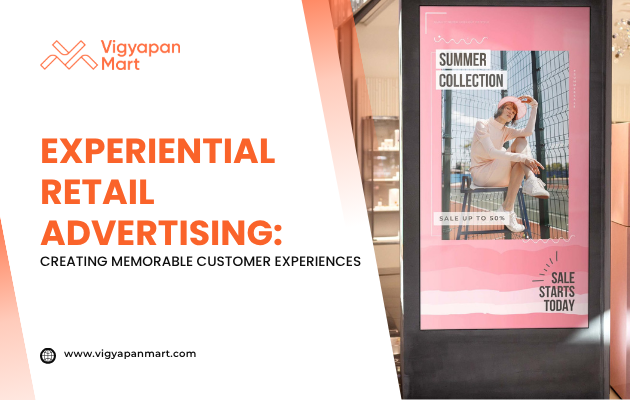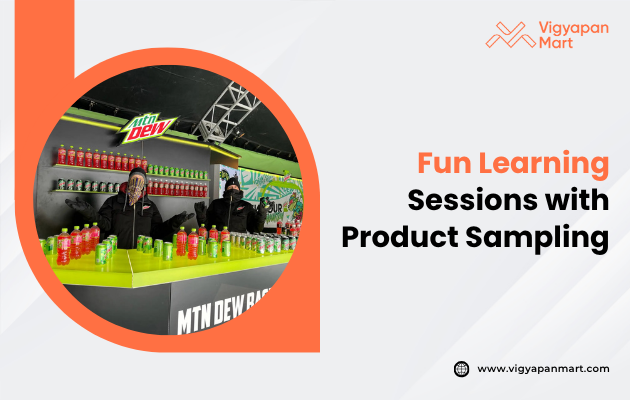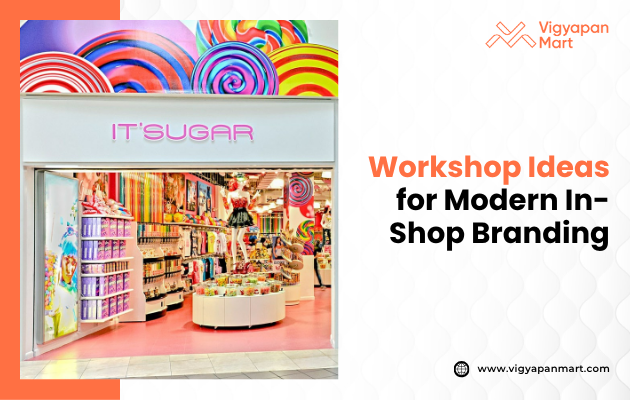Experiential Retail Advertising: Creating Memorable Customer Experiences

What is Experiential Retail Advertising?
Experiential retail advertising is about making shopping more than just buying things. It is about giving customers special experiences that they will remember. Imagine walking into a store and not just seeing clothes or gadgets, but also getting to try fun activities, see cool art, or even meet new people. That is what experiential retail is all about. The main goal is to create memories that last and make customers want to come back again.
Examples: Stores might have live music, art shows, VR games, or even cafes inside.
How Experiential Retail Works?
Experiential retail is all about using creativity to make shopping better. Here are some ways stores do this:
- Interactive technology: Stores use VR, AR, and big screens to let customers try products in new ways.
- Events and workshops: Some stores have classes, concerts, or even sleepovers to make shopping more fun.
- Multisensory experiences: Stores use lights, sounds, smells, and even touch to make shopping feel special.
- Social spaces: Stores become places where people can hang out, not just shop.
Top Examples of Experiential Retail
Here are some real-life examples of experiential retail:
- Samsung 837 in New York: This is a huge space with interactive art, VR, lounges, and a massive screen wall. It is more like a museum than a store.
- House of Vans in London: This store has skate ramps, a cinema, a café, and live music. It is a place for skaters and music fans to meet and have fun.
- TOMS VR Experience: TOMS put VR headsets in 100 stores. Customers could “visit” Peru and see how their shoe purchases help people there.
- IKEA Sleepovers: IKEA let customers spend the night in their warehouse. They got massages, picked bed linens, and got sleep advice from experts.
- Glossier Café Pop-up: Glossier opened a café where people could eat and shop for beauty products. The café was painted in their signature pink color for great photos.
Benefits of Experiential Retail Advertising
Experiential retail has many benefits for stores and customers:
- Makes shopping fun: Customers enjoy their time and want to come back.
- Creates memories: People remember unique experiences and talk about them with friends.
- Builds community: Stores become places where people meet and share interests.
- Boosts sales: Happy customers are more likely to buy and recommend the store to others.
- Helps stores stand out: With so much competition, experiential retail helps stores be different.
Key Facts and Figures
- Target audience: Millennials are a big focus, but all ages can enjoy experiential retail.
- Technology: VR, AR, and interactive screens are common tools.
- Social media: Many experiences are designed to be “Instagrammable” so people share them online.
- Measurement: Stores can track success by counting visitors, using surveys, and looking at social media posts.
How to Create an Experiential Retail Experience?
If you want to try experiential retail, here are some simple steps:
- Know your brand: Make sure your experience matches what your brand stands for.
- Be creative: Think outside the box. Try new ideas like workshops, games, or special events.
- Use technology: Add VR, AR, or interactive screens to make the experience modern.
- Engage all senses: Use lights, sounds, smells, and touch to make the experience feel real.
- Encourage sharing: Make your experience fun to share on social media.
- Measure success: Track how many people come, what they say, and how much they share online.
Conclusion
Experiential retail advertising is changing the way we shop. It is not just about buying things anymore. It is about having fun, making memories, and feeling connected to brands. Stores that use experiential retail stand out and make customers happy. Whether it is through technology, events, or creative spaces, experiential retail is here to stay. Want to grow your business with experiential retail advertising? Connect with Vigyapan Mart today.









